One issue that we are repeatedly asked about is what to do about the many different not so pleasant smells that our pups bring with them into our homes.
Oftentimes dog owners feel that incense is an effective way to deal with some of these smells. While incense may be effective at covering up some of these unsavory smells, it can be dangerous to burn around your pup.
Burning incense is considered bad for dogs. The smell may interfere with a dog’s keen sense of smell, and inhaling the smoke can cause respiratory symptoms and damage to a dog’s lungs. However, with adequate ventilation and appropriate placement, these risks can be lessened.
Many people wrongfully assume that because incense is burned so freely and actually smells good, that there is no harm in the smoke.
This is simply not true. So let’s take a closer look at exactly what is in the incense that we burn.
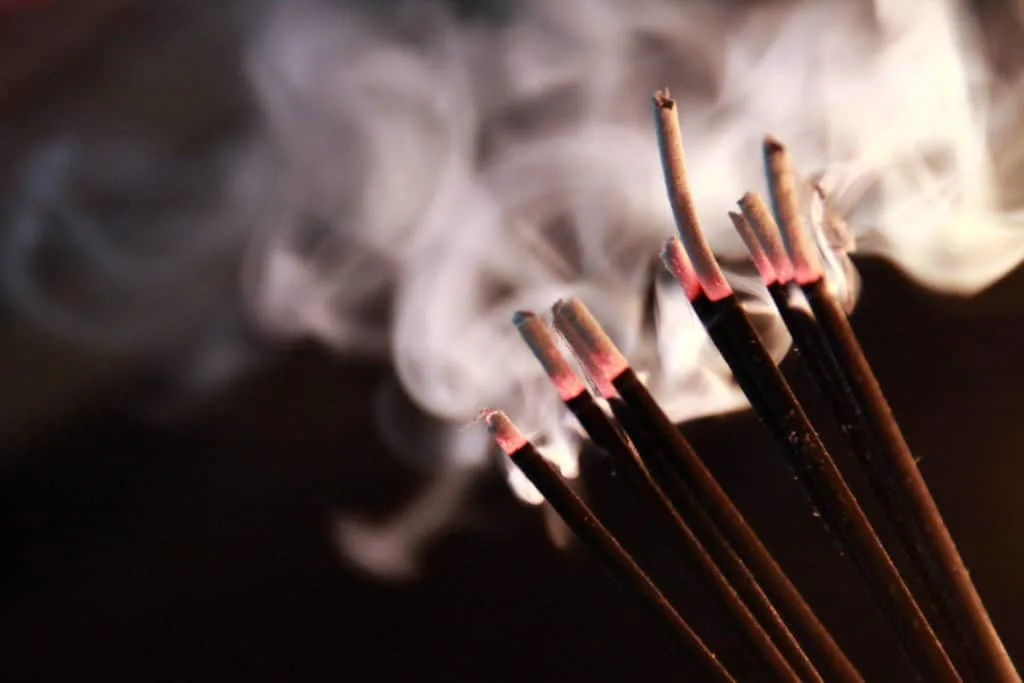
Click Here to Jump to a Section
Why is Incense Bad for Dogs?
There are a number of reasons to refrain from burning incense around your dogs.
Let’s begin with the one of the most serious problems first: pet asthma secondary to smoke inhalation.
Inhaling smoke from any source is bad for both you and your pet. This has long been established fact, as has been expressly stated by the The Environmental Protection Agency in a report going back to 2001.
“incense smoke can be a major source of particulate emissions in indoor air. The particulates produced when burning incense can deposit in the respiratory tract. These emissions may contain contaminants that can cause a variety of health effects, including mutagenic effects and airborne dermatitis.”
EPA as quoted by Green Builder Media
What this essentially means is that inhaling smoke causes inflammation in your lungs, and this leads to you not having adequate oxygen in your system.
This is a concern for us humans, but even more of a concern for our furry friends, as their lungs that are much more sensitive than ours and thus much more easily damaged.
Pet Asthma
Just like you, your dog has the unfortunate ability to develop asthma.
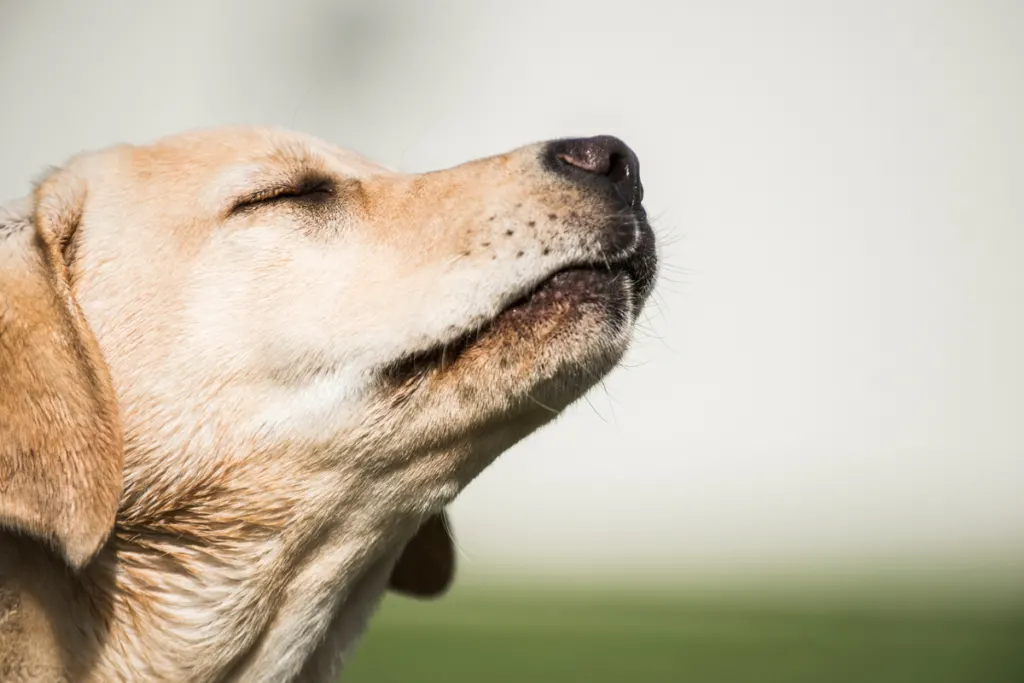
Asthma is a respiratory condition where your dog has repeated episodes of wheezing, coughing, or difficulty breathing.
Certain “brachycephalic breeds” will be at an even higher risk of smoke inhalation from incense.
The term “brachycephalic” means “having a relatively broad, short skull (usually with the breadth at least 80 percent of the length)”. (Collins Dictionary)
Some common brachycephalic breeds are:
- Bulldogs
- Bull Mastiffs
- Boston Terriers
- Boxers
- Pugs
- Shih Tzus
- Lhasa Apsos
- Pekingese
Dogs also have the same asthma triggers as many people. These include:
- smoke
- aerosol sprays
- grasses
- pollens
An asthmatic dog may tip you off through its behavior of the problem. So be aware of the following symptoms:
- intolerance to exercise
- heavy or labored breathing
- loss of appetite
- weight loss
If your dog has asthma, burning incense carries with it the very real possibility of triggering it.
And if your dog does not have asthma, be aware that exposure to burning incense can actually cause it.
If you do choose to burn incense around an asthmatic dog, be sure that you do it only in extremely well-ventilated areas.
Incense is a Fire Hazard
Aside from incense smoke being harmful to your dog, remember what is producing the smoke – heat. Burning incense is a fire hazard!
The first and most important rule is to never leave incense burning in a room with your pet unattended.
Also, remember that lit end of incense will burn anything with which it comes into contact. This includes your pet’s fur.
It is important to place lit incense where your dog will not brush up against it.
So if you have a dog, make sure that you place lit incense on an elevated surface, and be aware not to burn incense on any surface which is the same as your dog’s height.
And remember that happy dogs wag their tails. Be aware of this, and keep burning incense away from where your dog’s tail may come into contact with it.
Besides potentially burning your pet if it comes into contact with it, incense also presents a fire hazard if knocked over.
Unlike a candle, incense will most likely not go out if it falls over. Incense will continue to burn anything which it contacts. Carpets are especially vulnerable.
Types of Incense
While incense is most commonly sold in stick form, it is also manufactured in other ways. Let’s take a look at a few of the different types of incense available.
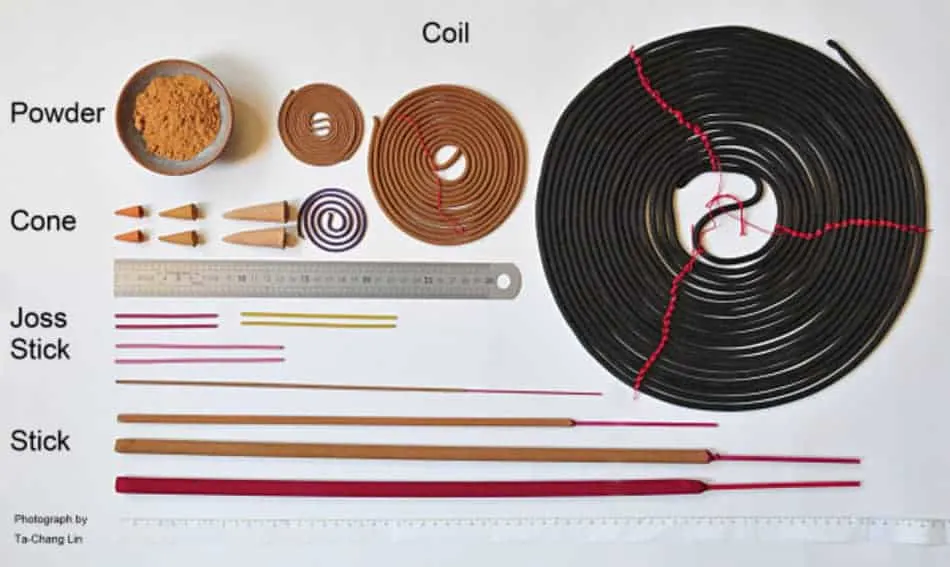
- sticks
- joss sticks
- coils
- cones
- rope
- rocks
- charcoal
- smudge bundles
- powders
What Is Stick Incense Made Of?
It is important to understand what incense is made of, as this allows us to see why burning incense is harmful to dogs. We have broken this down for you in the pie chart below:
A breakdown of the materials used in incense:
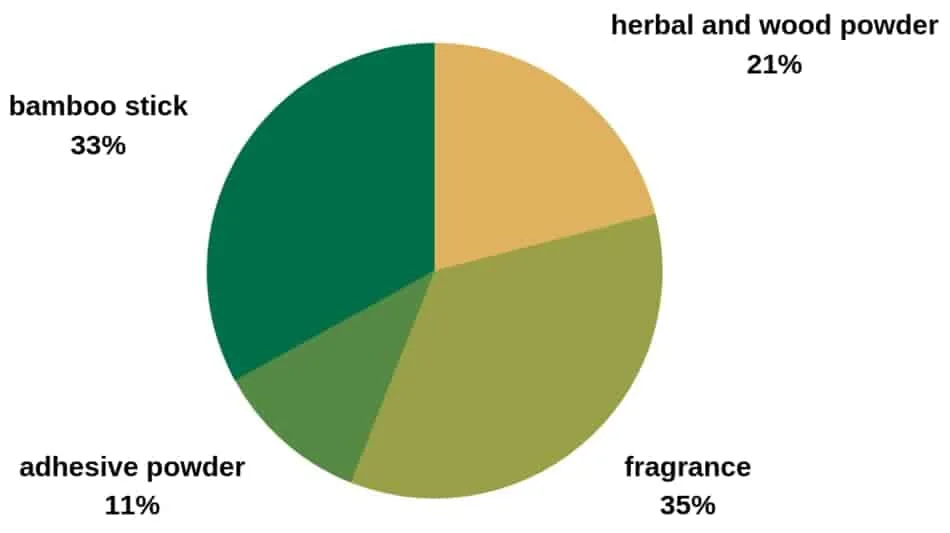
Herbal and Wood Powders
- Glycyrrhiza uralensis: Chinese licorice. A flowering plant from the legume/bean/pea family.
- Cinnamomum cassia: Chinese cinnamon from the bark of an evergreen tree or shrub. This is what we are usually getting when we purchase cinnamon in the U.S.
- Nardostachys: A flowering plant from the valerian family. It is used both as a perfume and as medicine.
- Foeniculum vulgare: Commonly known as fennel, it’s an aromatic flowering plant from the carrot family. We use it to flavor all types of food and drink.
- Rheum officinale: Also known as Chinese or Indian rhubarb. Its stalk is eaten both raw and cooked. In Indonesia it is also used to manufacture a traditional Javanese cigarette.
- Radix Aucklandia: Part of the Daisy family, it has a wide range of uses – from treating indigestion and anorexia to a hair coloring agent. It has also been traditionally used to protect clothes from moths and other damaging insects.
- Asarum: It is called wild ginger because it smells and tastes similarly. In the U.S. consumption of Asarum is warned against by the FDA, as it contains aristolochic acid, a potent carcinogen.
- Magnolia: This is a flowering plant family, it also includes trees and shrubs. The fragrance from Magnolia comes from its essential oils.
- Eugenia caryophyllata: Also known as clove, it is commonly used in cigarettes (though since 2009 they are classified as a cigar in the U.S.). Clove oil is also used as an ant repellent – it disrupts scent trails and kills ants on contact.
- Ocimum basilicum L.: This is what we know as basil. It’s used in food preparation, both raw and cooked.
Adhesive Powder
This is comprised of the powdered bark of a rainforest tree called Litsea glutinosa. Also known as bolly beech, sycamore, and brown beech.
The powdered bark itself is known as jiggat. The bamboo stick is first soaked in it and then covered with fragrance, along with wood and herbal powders.
It is dipped and dried several times, similar to candle production.
Fragrance in incense
- Lysimachia foenumgraecum: A flowering plant.
- Juniperus chinesis: Also known as a juniper shrub or tree.
- Liquidambar formosana Hance: This is a species of tree also known as the Chinese sweet gum.
- Santalum album L.: This is a tropical tree also known as Indian sandalwood.
- Musk abrette: This is an aromatic plant which also has medicinal purposes.
- Musk ketone: This is a synthetic compound which is used in many perfumes and cosmetics. (It was made by accident by a German chemist when he was trying to find a better way to produce TNT!)
- Musk xylene: This is a synthetic musk fragrance. It is used in perfumes and many other consumer product.
Harmful Chemicals Emitted From Burning Incense
While many of the ingredients contained in incense are natural, when they are burned, they produce harmful byproducts. Some of the most commonly emitted harmful byproducts from burning incense are:
- benzyne
- carbon monoxide
- sulfur dioxide
- formaldehyde
Is There Any Incense That Is Safe for My Dog?
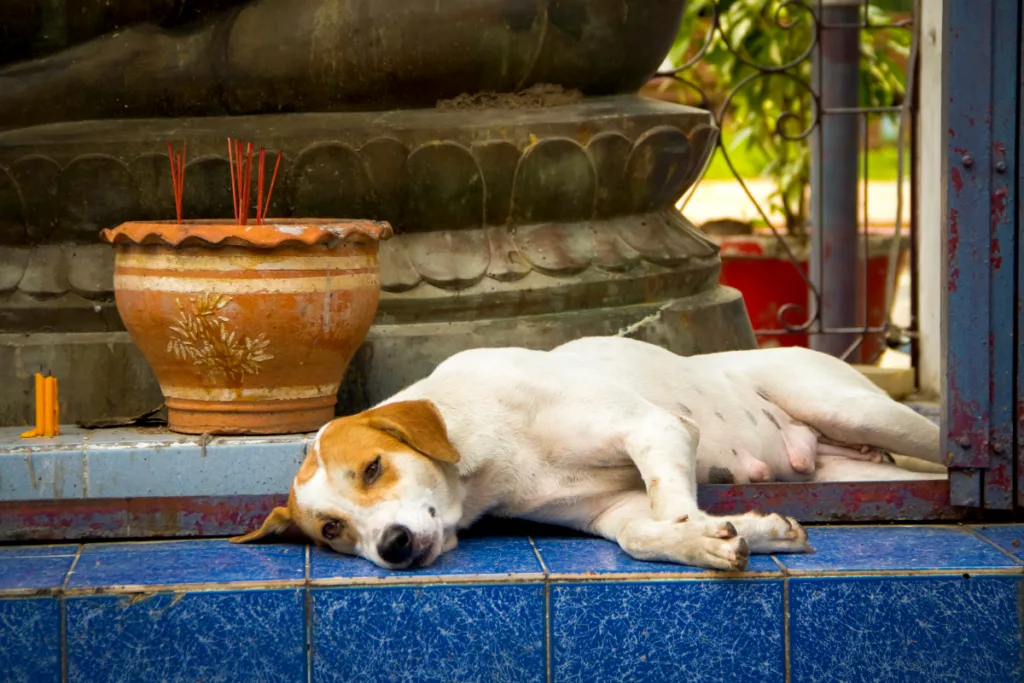
Unfortunately, the answer here is no. Anytime that you burn incense, it is going to emit smoke.
All smoke contains particulate matter which is potentially harmful to both you and your pet.
Some companies offer incense which they advertise as pet-friendly. But what they are actually selling is a fragrance which they are suggesting that your dog will enjoy.
Even if their claims are completely true, it doesn’t change the fact that they are still selling incense which is meant to be burned, and which still produces toxic smoke.
So be aware of this, and understand that there is no such thing as a truly pet safe or pet-friendly incense.
How to Most Safely Use Incense Around Dogs
While we recommend refraining from burning incense around your dog, if you’re still adamant on burning incense inside your home, we advise taking a few basic safety measures to make this as safe as possible for both you and your furry friend.
Only Use High Quality Incense
We recommend that you use only high-quality incense. However, here are literally hundreds of incense brands and scents available, so how do you choose the right one?
Generally speaking, aside from the many different types available, there are two main types of incense – traditional and hand dipped incense. (see above)
Traditional incense is the most pure kind of incense available, and it is all natural. However, producing traditional incense is time and labor intensive, to that creates a market for hand dipped incense.
Hand dipped incense is less expense and therefore more common. The drawback is that it is produced with chemicals and not natural scents, and thus increasing the risk of harm for both you and your dog.
So we recommend spending the extra money and buying only natural incense. Saving a little bit of money is not worth the increased risk of harm from burning unnatural chemicals.
Proper Ventilation
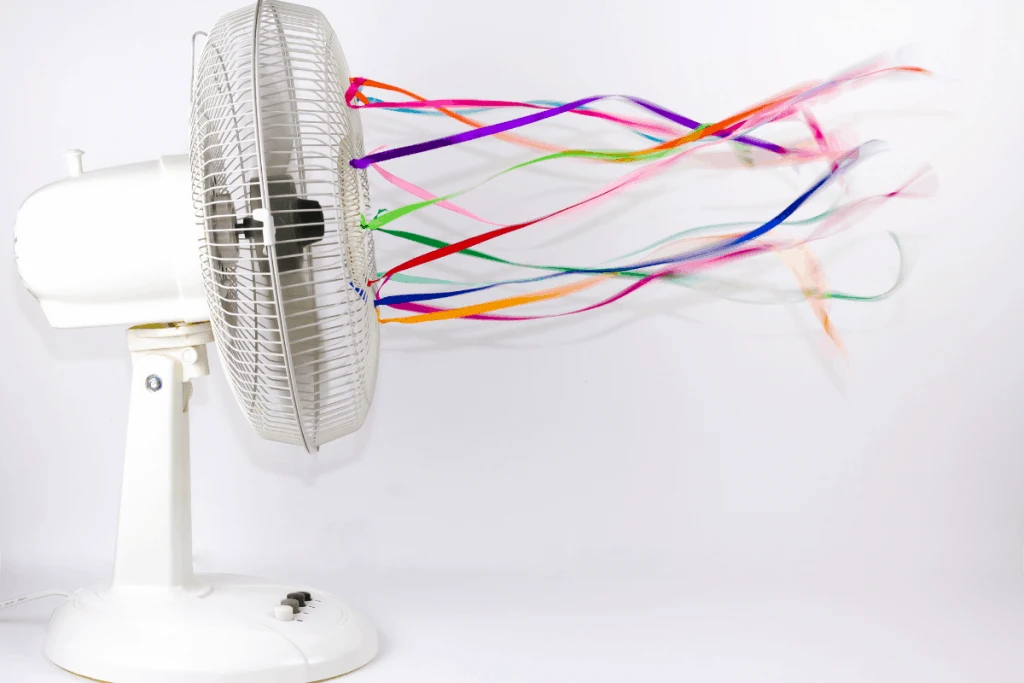
Fans and Air Purifiers
As previously mentioned, it is advised to burn incense only in well-ventilated areas. This holds true when burning it around both people and animals.
However, sometimes this is not practical or possible. For example, if you live in a place with extremely cold winter weather, it’s unlikely that you’ll want to keep a door or window open when it’s freezing outside.
One option is using keeping the door to a room open and using a fan to spread out the smoke to other open areas.
If you are burning incense where this is not possible, consider using an air purifier.
There is a wide range of air purifiers on the market today, and they span a huge spectrum in terms of quality and price. So if you plan on buying one, make sure that you do your research.
Alternatives To Burning Incense
Fortunately, you still have options which will allow you to create aromatic scents around your home without doing harm to your dog.
Oil Diffuser
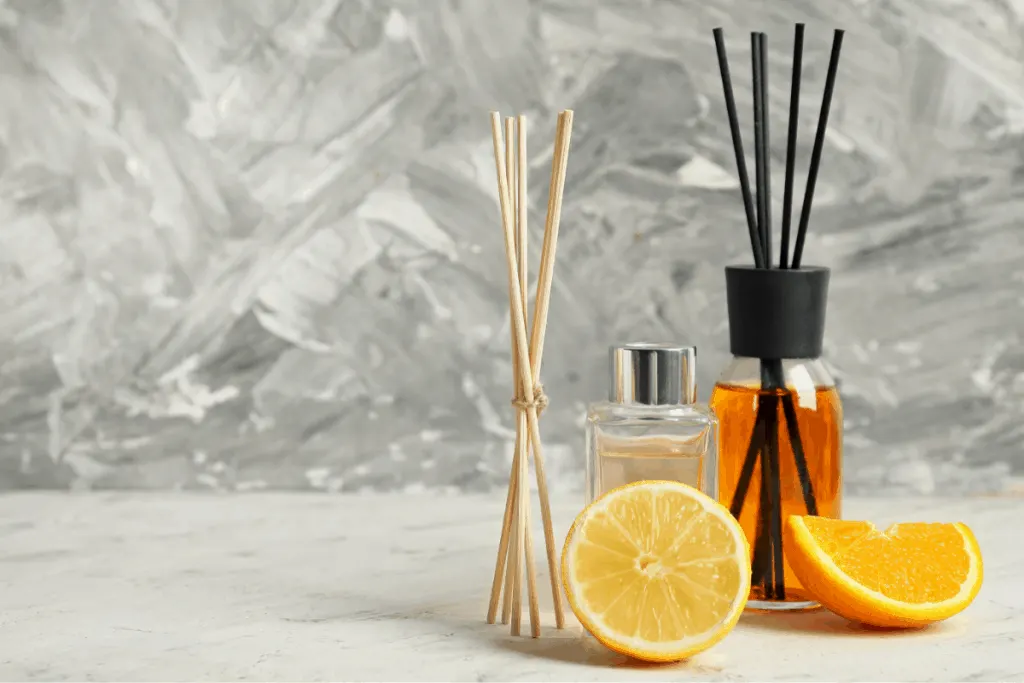
Consider using an oil reed diffuser. An oil reed diffuser uses a base filled with aromatic oil and reeds coming out of it to distribute scent.
There are tons of different types of aromatic oil scents which can be used in an oil diffuser.
You still need to be aware of how your dog reacts to different smells. Not all concentrated scent compounds are safe to use around dogs.
So if you do choose to use an oil diffuser, be sure to check with your veterinarian first.
Because there is plenty more to cover on this topic, I’ve supplemented this article with a more in-depth look at aromatherapy its effect on dogs. You can find the article linked below:
Is Aromatherapy Bad for Dogs? How to Safely Use It
Scented Candles
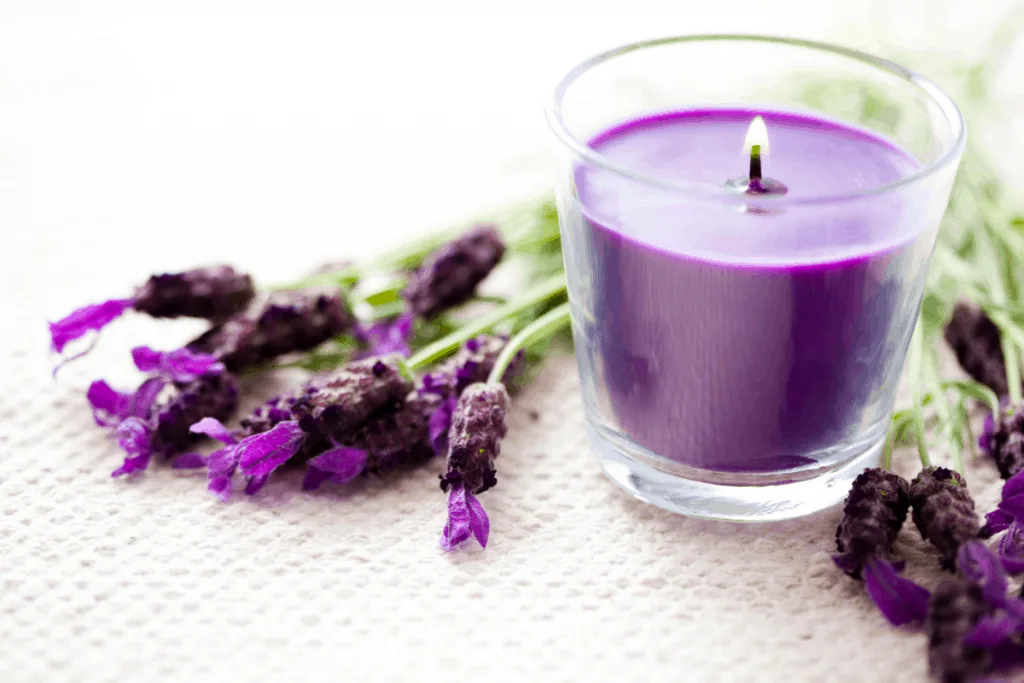
Scented candles can work as a safe alternative to incense for use around your dog.
But be aware, not all candles are created equal.
Most candles are made from paraffin. Paraffin is actually a petroleum product which contains carcinogens. These carcinogens are released when a candle is burned. These include:
- Lead: This is contained in the core of many candle wicks. It is used to stiffen the wick in order to keep it out of the melted wax. When burned, particles spread throughout the air and get deposited on surfaces.
- Benzene: This especially affects pregnant animals by being harmful to their developing fetus. It can also damage the blood and immune system, as well as cause cancer.
- Toluene: In animals, it has been shown to have a toxic effect on their liver, kidneys, and lungs. It can also impair their immune system.
- Acrolein: This can affect the gastrointestinal health of animals. Effects include hyperplasia (precancerous), ulceration, and hemorrhage.
Dog Safe Candles
There are however candles which are not made from paraffin and are safe to burn around your dog.
Soy candles: (with a cotton wick) These actually burn longer and cleaner than paraffin candles. Soy candles are non-toxic to either humans or animals.
I highly recommend trying out Mrs. Meyer’s Soy Candles. They are cruelty free, as the ingredients are never tested on animals, and seem to burn forever. Reasonably priced, and they smell great as well.
Beeswax candles: Similar to soy candles, beeswax candles burn cleaner and longer than paraffin candles. And they do not emit harmful toxins into the air.
Interesting fact: Beeswax is a byproduct of honey, and it takes 6-8 pounds of honey to produce one pound of beeswax, so this wax isn’t cheap. In fact, it’s the most expensive candle wax in current use.
When burning any type of candle, remember that candles are a very real fire hazard. Take extreme care when finding a proper place to burn a candle.
It is important to burn candles in as much out of the way place from your dog that you have available.
Also, be aware to not place a lit candle on any type of runner or cloth which may be dangling off of the edge of a table or other surface. Your dog may brush up against it and pull it and the candle down together.
Final Thoughts
In summary, it is best to stay away from burning incense around your dog. If you must, follow the above-listed precautions.
And simply use your common sense. If incense smoke is irritating to you or others, although they can’t tell you, it’s also very likely to irritate your dog.
